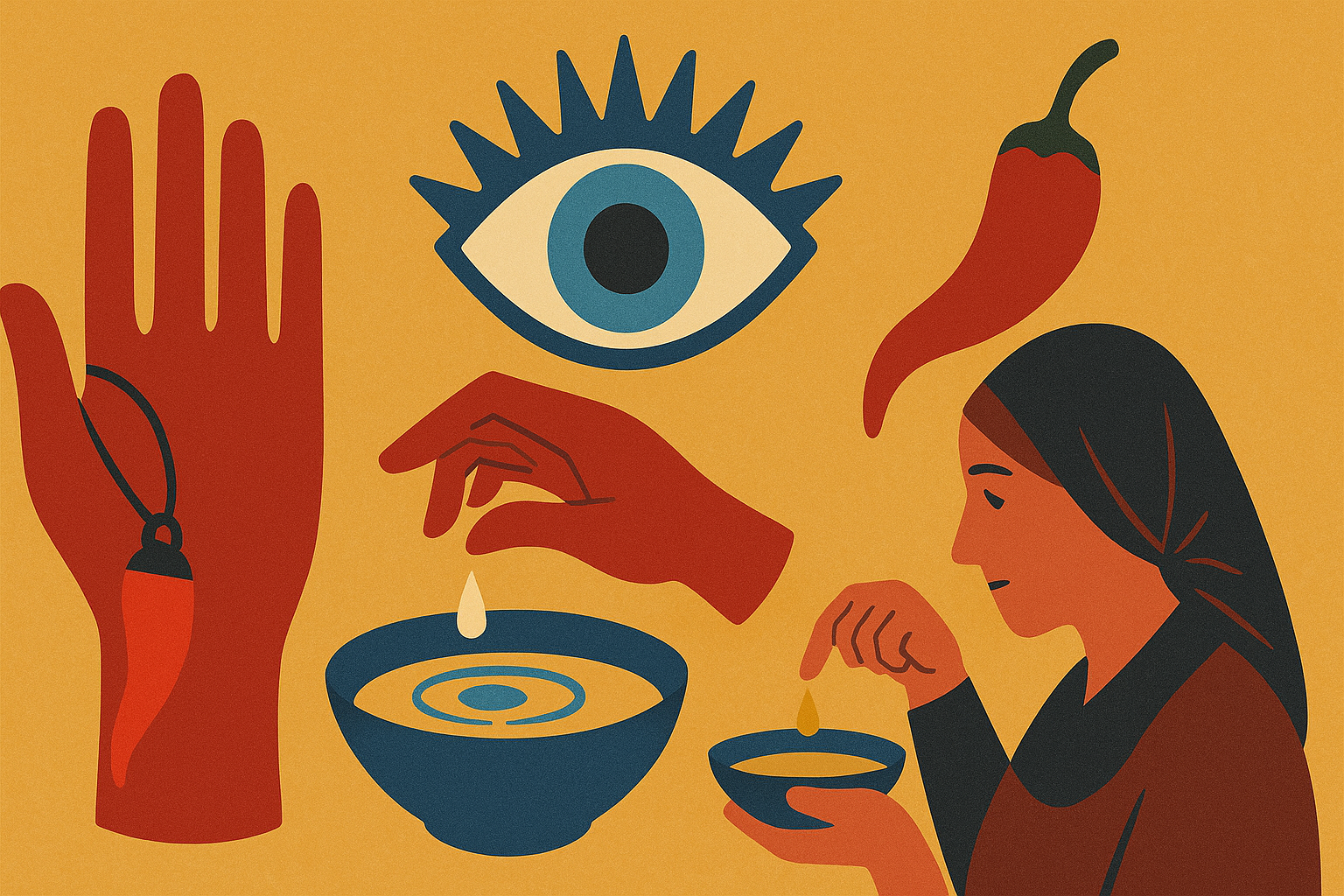In the Tuscan village of Retignano, population 400, a centuries-old ritual against the “evil eye” is still alive. Visitors to the home of Ester, a local woman known as a witch, are greeted not with incantations of sorcery but with a ritual involving a simple household item: olive oil.
During the rite, Ester drops oil into a bowl of water. If the droplet floats, the person is safe; if it dissolves, they are considered cursed. On one such occasion, she diagnosed a visitor with “a bad case of evil eye.”
Ancient Belief Across the Mediterranean
The evil eye — the idea that envy can involuntarily bring harm — dates back thousands of years to ancient Egypt and Mesopotamia. Today, blue eye-shaped talismans remain common throughout the Mediterranean and Middle East. Though many Italians dismiss it as superstition, the practice of warding off the evil eye continues in rural and suburban communities.
Cultural anthropologists such as Fabio Dei explain that the evil eye is linked to social envy rather than deliberate malice. Unlike sorcery, it is thought to be imposed involuntarily. Victims are believed to suffer headaches, sleeplessness, anxiety, forgetfulness, or misfortune. Infants and their mothers are considered especially vulnerable.
A Blend of Folklore and Faith
Despite opposition from church authorities, the Catholic Church historically tolerated such rituals, particularly in southern Italy, where Enlightenment influence was weaker. Over time, elements of the practice blended with Christian traditions, ensuring their survival.
Women like Ester are regarded as folk healers, inheriting the ability matrilineally. Rituals are often taught on specific nights — Ester recalls learning from “an old woman on Christmas night.” The ritual ends only when the oil droplet floats, symbolizing the curse lifted. Payment is not always expected; gifts of food or drink are common offerings.
A Cross-Cultural Tradition
Belief in the evil eye is not unique to Italy. Greeks recall grandmothers removing the curse daily, Iranians hide money after compliments, Lebanese parents adorn prams with talismans, and in India, children’s faces are marked with henna or soot to guard against “nazar.”
Even among those who no longer believe in its power, the ritual retains meaning. One astrophysicist admitted to continuing the practice well into adulthood, despite knowing its outcome depended on fluid properties, not magic.
Ritual as Reassurance
For many, participating in the ritual offers psychological comfort during times of uncertainty. After Ester declared the curse removed, one visitor noted feeling unexpectedly lighter — proof, perhaps, of the enduring power of tradition rather than the supernatural.
The survival of the evil eye in Italy illustrates how folklore, faith, and cultural practices remain woven into daily life, offering a sense of continuity and reassurance across generations.








